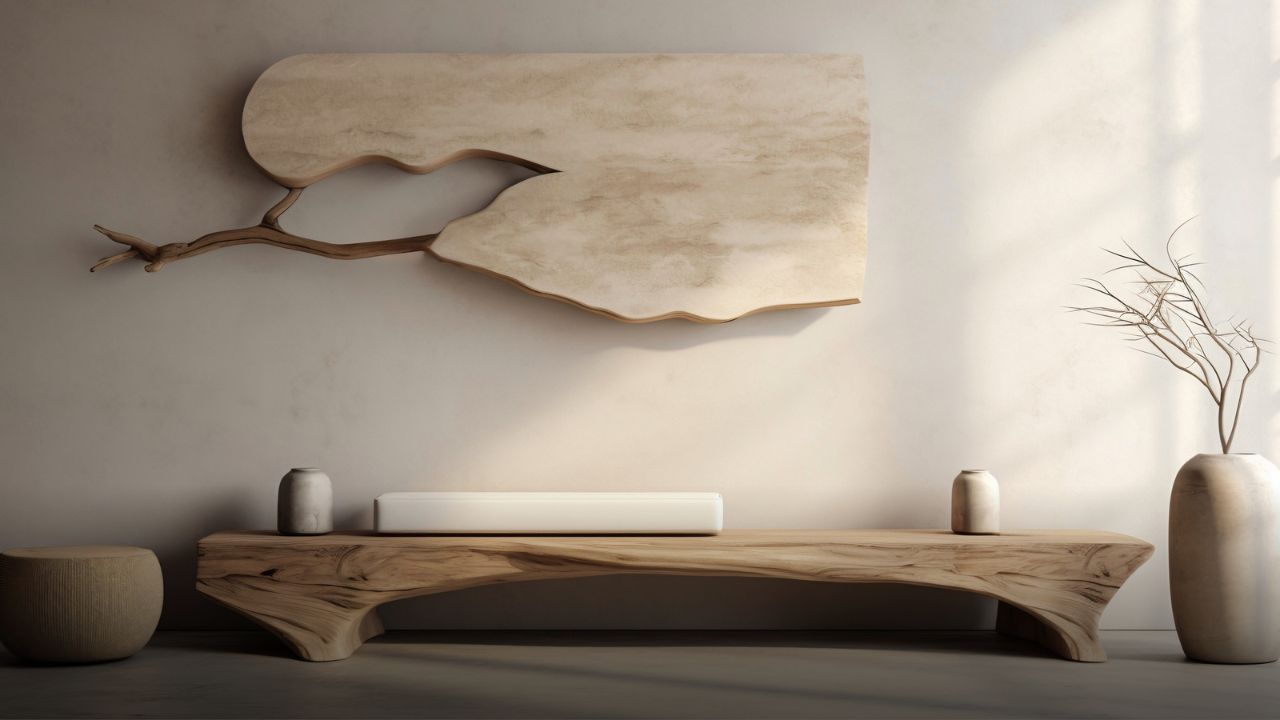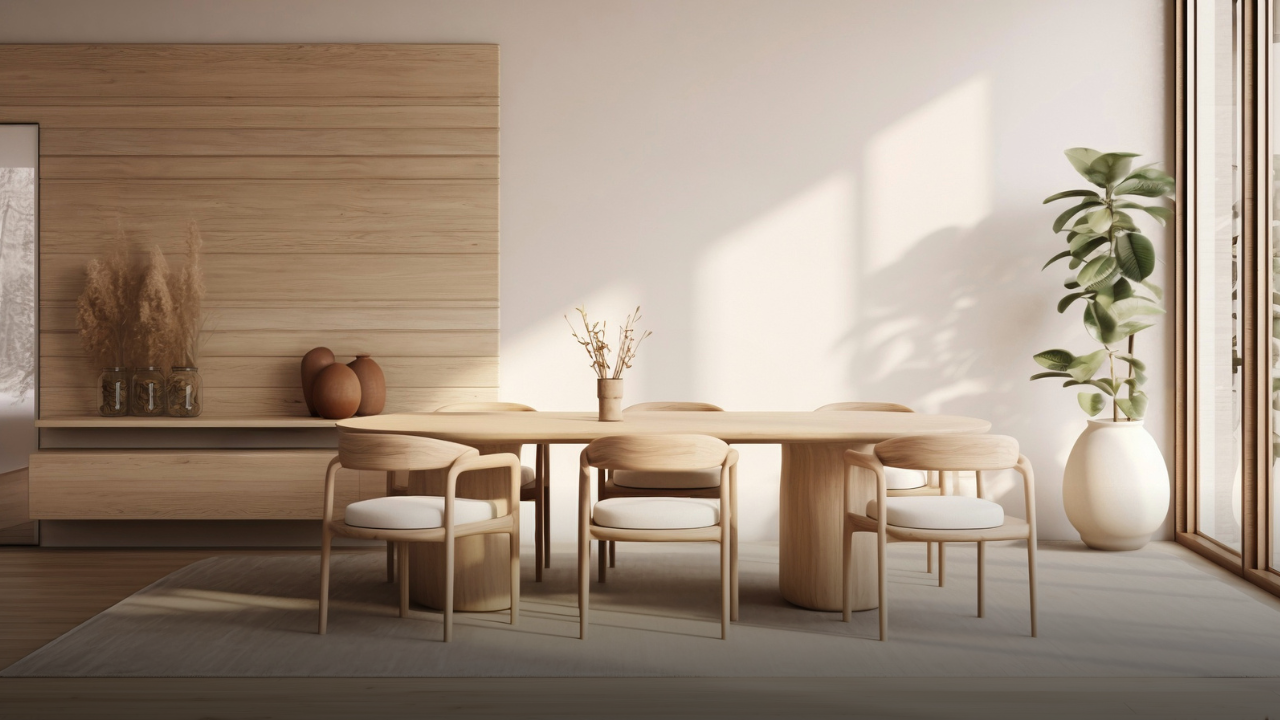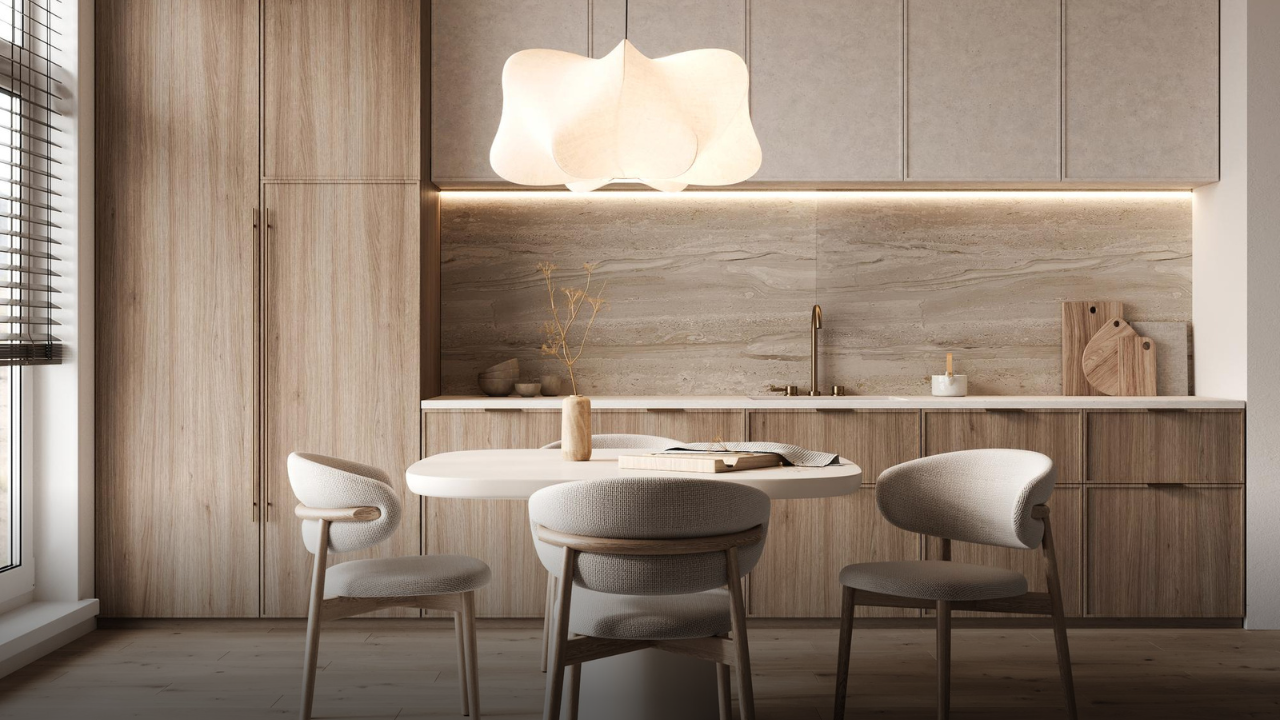Perhaps you've already heard of the Wabi-Sabi style? Or maybe you haven't?
Discover how Wabi-Sabi style can help you find beauty in imperfection and celebrate simplicity and modesty in your everyday life. 🧘♂️
In Japan🇯🇵, Wabi-Sabi describes the ingenious and poetic marriage of minimalism and imperfect or ageing objects.
In Japan, beauty is also found in imperfect things. Like Kintsugi, the art of repairing objects with gold, the Japanese "Wabi-Sabi" philosophy is also inspired by the poetic resilience of nature. 🌿

Born in the 15th century on the archipelago, this singular artistic movement 🎨 has crossed the ages to invite itself, today, into our interiors. 🏠
What is wabi-sabi in Japan?
Living a simple life, accepting and appreciating the imperfections of oneself and, above all, of the world around us 🌎: this is how wabi-sabi, a Japanese aesthetic and spiritual concept deeply rooted in Japanese culture, might be described.
The most difficult part of the wabi-sabi concept is not only to apply it, but also to explain it. The difference is subtle, but it clearly demonstrates that, once again, Japanese concepts are lived and experienced more than they are explained, like ikigai, the quest for a happy, balanced life. 🧘♂️
Leonard Koren, architect and aesthetic theorist, has spent many years studying the concept of wabi-sabi and has published a book entitled "wabi-sabi", for artists, designers, poets and philosophers, in which he attempts to define wabi-sabi.
"Wabi-sabi is the beauty of imperfect, impermanent and incomplete things. It is the beauty of modest and humble things. It is the beauty of atypical things."

The origins of wabi-sabi
If we are to trace the roots of wabi-sabi, we must turn to the hushed, delicate world of the tea ceremony, for it is here that it was born. In the 14th century, when the tea ceremony was a lavish affair, using mostly luxurious objects imported from China and shaped to perfection, Murata Shuko, a Zen monk, developed a simpler tea ceremony in response.

He chose to serve tea in local, handcrafted utensils, leaving plenty of room for imperfections.
The idea didn't catch on immediately, but in the 16th century, a tea master named Rikyu went so far as to replace the luxurious Chinese pieces with local craftsmanship, and even set up his tea pavilion in a house that resembled a peasant's hut. Wabi-sabi was born. 🎉
Meaning of Wabi Sabi : Beauty in imperfect things
Wabi-sabi is made up of two intertwined principles: "wabi", which refers to the plenitude and modesty that can be experienced when observing nature 🌱, and "sabi", the sensation we feel when we see things with a patina of time or human labor. The ethics of wabi-sabi therefore advocate a life led by controlled sobriety, where we are able to detect and appreciate impermanence, the beauty of all things humble and imperfect.
The aesthetic cultivation of dry garden stones, bonsai pruning and kintsugi, the art of repairing broken objects with gold, are all contemporary illustrations of wabi-sabi. Highlighting the imperfections of a place or object is a way of celebrating and appreciating it. In the case of kintsugi, breakage is a sign of renewal, not by concealing it, but by highlighting it. The object thus symbolizes the beginning of a new cycle. ♻️
As for bonsai🪴, you can admire them in a unique location not far from Tokyo, in the Omiya district. The latter houses a bansai museum as well as magnificent nurseries.
Japanese hagi and raku ceramics can also be fine illustrations of the wabi-sabi concept. Hagi pottery is characterized by simplicity of form and neutral tones, while raku ceramics are hand-made, with an irregular, rough, crackled appearance and dark colors.
"It's a difficult notion to explain, and although all Japanese are willing to say they understand the feeling associated with wabi-sabi, they are very few able to articulate it."
How to incorporate Wabi-Sabi Design in your home?

To follow the Wabi-Sabi movement, we prefer raw, organic and noble materials, such as wood 🪵, bamboo🎍, linen... We also give pride of place to handicrafts and unique objects, always preferring the useful to the superfluous. And we're learning to recycle old objects rather than throw them away!
In your interior, Wabi-Sabi is a concept that emphasizes simplicity, naturalness and rusticity. The colors are natural 🎨, the materials rough, the shapes imprecise and the decor handcrafted. That's the charm of this kind of decor.
The Wabi-Sabi style is highly design-oriented, bringing minimalism and integrating every element of your interior into its ambience. That's why it's so important to maintain consistency throughout your decor.
Noble materials

While the Wabi-Sabi look is centered on raw materials, noble materials such as leather, silk or velvet can also be incorporated, provided they are used correctly and in neutral tones. For example, leather can add a touch of warmth and luxury to a wabi-sabi space. Silk or velvet can be used on textiles such as cushions or curtains, giving the ensemble a soft, comfortable texture. However, it's important not to overuse these noble materials, as this could detract from the simple, natural ambience so characteristic of wabi-sabi interior design.
Recycled items

By choosing used objects, recycled materials and even vintage pieces, you can help reduce your environmental impact by avoiding the purchase of new items and extending the life of existing ones. What's more, salvaging can be an economical solution for furnishing your interiors, as it allows you to obtain objects at lower cost, or even free of charge, notably by bartering or salvaging from friends, family or associations.
What's more, to achieve a Wabi Sabi interior, don't be afraid to recycle your furniture. Opt for an old wooden workbench as bathroom furniture. You can also recycle a slightly dented metal sink for your kitchen and use tree trunks for your dining room seats or to create pretty stools in your living room. The key is to remember that everything can be recycled.
Go for neutral, harmonious colors

Neutral colors are a popular choice for the wabi-sabi style because of their ability to create a soothing, uncluttered ambience. The wabi-sabi spirit is inspired by nature and favors the use of natural materials such as wood, stone and linen, and neutral colors like beige, brown, gray, green and pale blue blend easily into this type of material palette. What's more, neutral colors and light hues return to basics and simplicity, letting the natural elements of the environment take center stage.
While natural colors dominate in Wabi-Sabi interiors, touches of darker colors can be added to create a subtle contrast and add depth to the whole. Dark shades such as black, dark brown, navy blue or olive green can be used to add dimension and character to a space. They can be added to small decorations, such as cushions, rugs or vases, to avoid overloading the space and retain the refinement that characterizes the Wabi-Sabi style.

Here are a few tips to remember for adopting this unique style at home:
- Focus on timeless furniture, both in terms of durable materials and clean lines, and avoid plastic and/or synthetics wherever possible.
- Don't distort your home's original materials: old stone on walls or exposed beams are very Wabi-Sabi!
- Declutter your interior: leave only the essentials.
- Let your furniture and textiles wear out as much as possible.
- Don't be afraid of asymmetry, mismatched items and irregular materials (weathered walls, faded tiles, worn wood...).
- Opt for natural colors: ochre, anthracite, taupe, sand, chalk, sage, brown...
- Choose handcrafted decorations, or objects you've made yourself (pottery, bed linen, etc.).
- As a finishing touch, decorate your interior with plants and fresh flowers to bring nature indoors!
Wabi Sabi vs Japandi
The Japandi style combines Japanese minimalism and Scandinavian modern design, featuring clean lines, natural materials, and a muted color palette.



Leave a comment
This site is protected by hCaptcha and the hCaptcha Privacy Policy and Terms of Service apply.